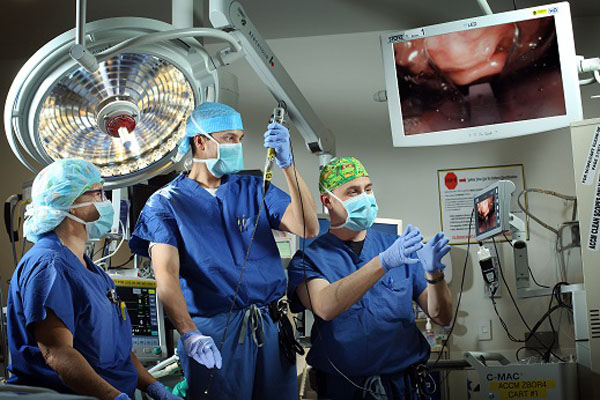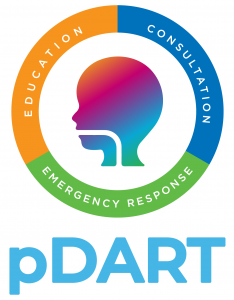
What We Do:
One of the critical roles of pediatric anesthesiologists is to evaluate and manage a child’s airway to ensure safe care and reduce the likelihood of complications. The Johns Hopkins Pediatric Anesthesia Division is leading the way in pediatric airway management with the formation of the Johns Hopkins Pediatric Difficult Airway Program (PDAP) that consists of a Pediatric Difficult Airway Response Team (PDART) and Pediatric Difficult Airway Consultation Service (PDACS). Pediatric airway issues are often predictable and manageable when identified early. All inpatients at the Johns Hopkins Bloomberg Children’s Center are screened using the team’s Pediatric Difficult Airway Screening Form that further triggers the Difficult Airway Consult Service to begin airway management planning. This proactive approach reduces the likelihood of airway emergencies and complications throughout the patient’s hospital stay which may include surgical and intensive care. In case of an airway emergency, the Pediatric Difficult Airway Response Team (PDART) will respond.
Multidisciplinary Pediatric Airway Course
The Multidisciplinary Pediatric Airway Course is designed to teach the basics of airway management as well as advanced skills to manage different airway scenarios for pediatric patients to all disciplines of medicine involved in the care of children. Participants will be exposed to and become comfortable using various ventilation and intubation devices via hands-on skill stations within the Johns Hopkins Medicine Simulation Center. Commonly-encountered scenarios, including those found in the Emergency Department, ICU, operating rooms, and pre-hospital settings, will be simulated to re-enforce and emphasize the objectives of the course. To register for the course, click the link below.
https://learn.hopkinsmedicine.org/pdart/learn/public/learning_plan/view/7/PDART

- Early identification of children with difficult airway
- Implementation of an airway plain in anticipation of a difficult airway event
- Rapid and effective response for airway compromised children
- Availability of appropriate experts and specialized equipment for safe airway management
- Reduction in complications
- Reduction in cost of care
- Education of staff and faculty
- Research
The Pediatric Difficult Airway Consult Service (PDACS) includes anesthesiologists, pediatric ENT, PICU, NICU, trauma surgery, and emergency medicine physicians along with certified nurse anesthetists, nursing, and respiratory therapy counterparts. The consult service is charged with developing plans for inpatients who screen positive for potentially difficult airways using the Pediatric Difficult Airway Screening Form upon admission. After these patients are identified, a consultation will be made and the PDACS will formulate a plan, based on the patients’ physical attributes and airway management history, in case respiratory distress ensues.
Johns Hopkins sponsors a multidisciplinary pediatric airway course designed to teach the basics of airway management and the advanced skills to manage difficult airway scenarios for pediatric patients. The course is comprised of didactic lectures as well as hands-on experience with airway management devices and tools as well as simulated difficult airway scenarios in our state-of-the-art Simulation Laboratory. Please contact Dr. Nicholas Dalesio for the next course offering date.
The Johns Hopkins Pediatric Difficult Airway Program is one of the few multi-institutional airway centers in the country. The program collaborates with the Children’s Hospital of Philadelphia to collect data related to pediatric airway management that help develop and refine screening tools, clinical pathways, and proactive approaches to enhance the safety and quality of care for the pediatric patient population.
